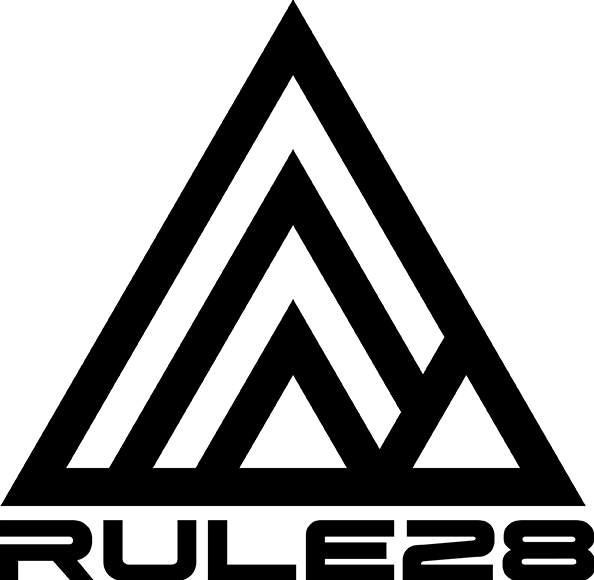At Rule 28, we receive hundreds of sponsorship inquiries each year, ranging from professional athletes to grassroots riders. Some stand out as thoughtful and strategic, while others leave us wondering what’s in it for us.
To help both athletes and brands, we’re sharing our perspective on how to make the best possible impression when approaching a company for sponsorship.
Getting Started: What We Look For
- Think Like the Brand
Understand the brand’s values, goals, and market position. How can you contribute to their vision? Tailor your message to show how your achievements, style, and following align with the brand's audience. The easier you make it for the brand to see the value of the partnership, the more likely they’ll be interested. - Example: Instead of simply introducing yourself, highlight why you’re interested in the brand’s products or mission. If you’ve followed us for a while and have noticed certain features in our products that resonate with your needs, mention that. This helps show genuine interest.
What a Good Sponsorship Pitch Should Include
- Make It About the Brand, Not You
To be blunt, most athletes’ stories are more similar than they are different. While your journey is important, what really matters to the brand is what they get out of the partnership. Be clear on how you will provide value to the brand. - Focus on what you can do for the brand: visibility, social media content, engagement with fans, promotion at races, etc.
- Example: "By partnering with Rule 28, I can create regular content that showcases your cutting-edge aerodynamic kit in action, with a focus on high-speed racing. Here’s how I plan to engage my followers and yours…
- Why this Brand?
Make it obvious that you aren’t just sending the same message to every brand. Mention specific aspects of the company that resonate with you. Be genuine—brands can easily spot when someone is disingenuous. - Note: If you have a personal story or connection with the brand, or have been using the products for a long time, mention it here. This helps personalise your message further and builds trust.
- Use the Same Language
It’s important that your communication is in the language of the brand you’re speaking to. If you’re approaching a UK-based brand, don’t send your inquiry in French, Spanish, or Italian. This indicates you’re sending the same message to multiple brands without tailoring your approach, which is an instant red flag.
Demonstrate Your Value
- Highlight Your Social Media Presence
Provide your social media handles, follow the brand, and engage with their content. Social media is a huge aspect of modern sponsorship deals, so your presence there matters. Even if you have a smaller following, strong engagement and compelling content can still make you attractive to brands. - Tip: If you’re a smaller athlete, frame this as a positive. Brands may be interested in athletes who are more agile and engaged with their community, offering more personalised content.
Example: "I may have a smaller following, but I consistently engage with my audience, and my videos often achieve 20% engagement rates. This makes me well-positioned to highlight your products to a passionate, engaged fanbase."
- Provide Metrics
If you’ve worked with brands before, mention any measurable successes. Did you increase sales, followers, or engagement for a previous sponsor? Share this with specifics. Numbers give brands confidence that you can deliver results. - Example: "After creating content for [Brand X], their post received a 25% increase in engagement, and their product link saw a 12% increase in click-throughs in the first week."
Bad vs. Good Example Pitches
Bad Example (Email):
Bonjour,
Je me présente XXXX, je pratique le cyclisme sur route et je suis à la recherche de sponsors pour m’accompagner tout au long de la saison 2022.
N’hésitez pas me recontacter si besoin via mes coordonnées.
Merci d’avance de votre attention et votre réponse.
This message is too generic, impersonal, and doesn’t give the brand any reason to feel excited or interested.
Good Example (Instagram Message):
Hey Sam,
Hope all is good! I see you’re doing some Black Friday promotion on the site and wondered if you’d be interested in some content for it? In return for some kit, I can make a couple of vids about it and the promotion that we can either collaborate on or you can use on your channels?
[Link to example]
This is an example of some of my recent work for [Brand X], which, I’m told, created a 12% increase in sales since time of posting. I can replicate this style or however you would prefer it to be done.
This message shows initiative, provides an example of past work, and offers clear value to the brand.
Expanding the Conversation
- Start Small, Be Specific
Outline one specific goal, rather than asking for full-season sponsorship. Brands are more likely to agree to a smaller, well-defined request. For example, if you’re targeting a specific race, highlight why you believe this would be a great opportunity for the brand and how you can represent them there. - Example: "I’m competing in the [Event Name] in March, which draws thousands of cycling enthusiasts. I’d love to wear your kit for the event and share the experience with my followers."
- How Will You Promote the Brand?
Social media is a powerful tool. If brands like your initial approach, they’ll likely check your profiles. Make sure you are consistently tagging brands you use, teams you race with, and any events. This demonstrates to brands that you know how to engage and promote partners.
Note: Insert any examples or screenshots of past social media content that show how you’ve successfully promoted other brands.
- Ask for Engagement Tools
If the company like you and get back to you, make sure to ask for tools like discount codes to share with your audience. This not only benefits your followers but also gives the brand an easy way to track how effective your promotion is. - Example: "Would you be able to provide a discount code I can share with my followers? This could be a great way to promote the brand during the event and show how much engagement I can generate."
Final Thoughts: What We Look for at Rule 28
At Rule 28, we’re always on the lookout for athletes who are passionate, creative, and genuinely engaged with their followers. Whether you’re a high-level pro or an up-and-comer, what matters to us is your ability to authentically represent our brand and showcase the technical advantages of our aerodynamic apparel.
If you’re interested in working with us, make sure your pitch stands out by following the advice above—and don’t forget to show us how our gear helps you perform at your best.
Follow us on Instagram @rule28, tag us in your race photos, and let’s get aero and ride faster.






Share:
How Many Watts Do Aero Socks Save?
Team Sponsorship: How to Approach Brands